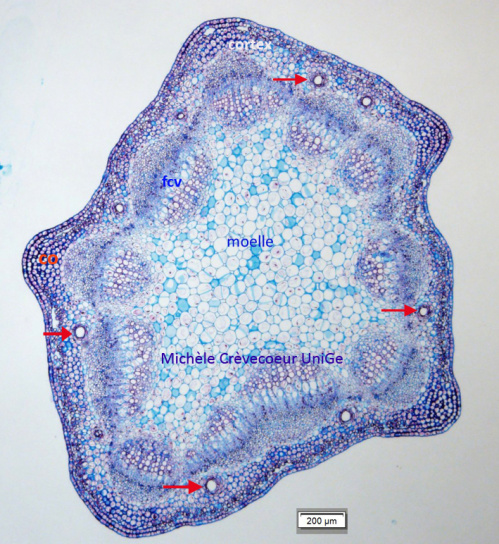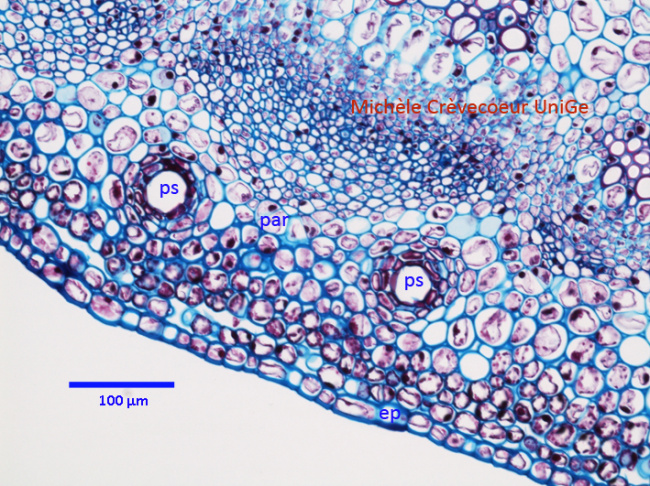Microphotographs of a cross section through a stem of Artemisia dranunculus
Tarragon, also called dragon grass, tarragon absinthe or serpentine, is a perennial, condiment herbaceous plant native to Asia. The samples of stem used for sectioning, have been harvested at the Conservatory and Botanical Garden of the city of Geneva.
The paraffin sections (8 μm thick) were stained with astra blue – basic fuchsin (see protocols).
The first micrograph shows a cross section with the extensive central pith and the cortex consisting in a few rows of parenchyma cells below the epidermis. Ten vascular bundles (fcv) are disposed on a single ring at the periphery of the pith and secretory ducts (red arrows) are observed in the cortex.
The paraffin sections (8 μm thick) were stained with astra blue – basic fuchsin (see protocols).
The first micrograph shows a cross section with the extensive central pith and the cortex consisting in a few rows of parenchyma cells below the epidermis. Ten vascular bundles (fcv) are disposed on a single ring at the periphery of the pith and secretory ducts (red arrows) are observed in the cortex.

Below, part of the section illustrating the angular collenchyma in different areas of the cortex. It consists of several layers of cells with thick walls between epidermis (ep) and a vascular bundle. cu: cuticle; ep: epidermis; x: xylem; s: secretory duct

Portion of the cross section showing two secretory ducts (ps) in the cortical parenchyma (par)

Characteristics of this section corresponding to a dicotyledon stem: large pith and reduced cortex, vascular bundles on a single ring with superposition of xylem and phloem, xylem towards inside and phloem towards the periphery.